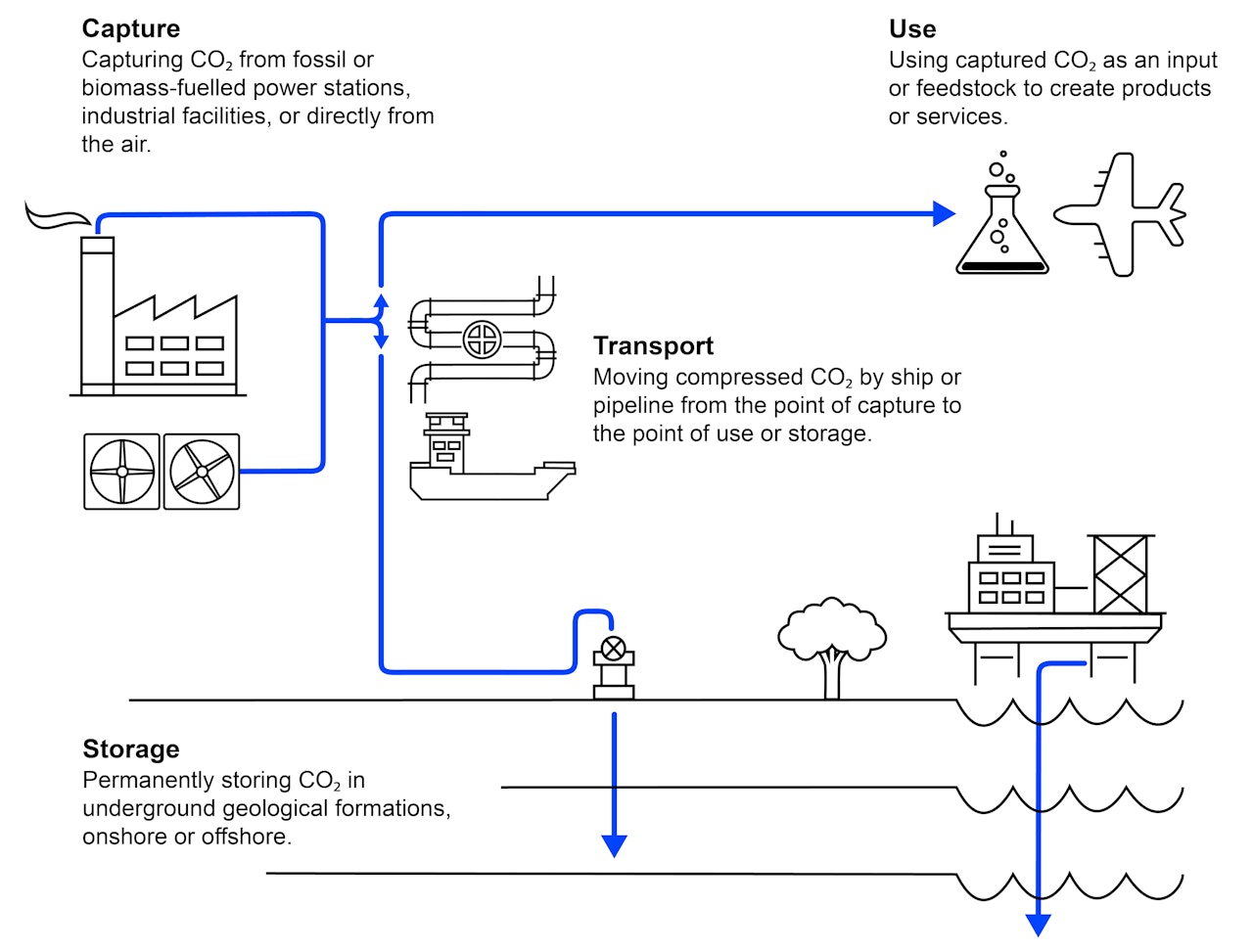The energy market is rapidly changing, and businesses are seeking routes to decarbonisation that meet their security, affordability, and sustainability needs.
Carbon capture, utilisation, and storage (CCUS) is an area of contention in the industry, from where it’s used to how much the country should rely on it to mitigate emissions. But what exactly is CCUS and what role should it play in supporting the UK’s net zero goals? For a deeper dive into this topic, we’ve put together this comprehensive guide to CCUS.
Click here to jump to the latest updates on CCUS.
What is CCUS?
Carbon capture, utilisation, and storage (CCUS) is a process that captures carbon dioxide emissions from sources like coal-fired power plants and reuses or stores the emissions. CCUS focuses on capturing carbon emissions at the source, and then either using the emissions (carbon capture utilisation, CCU) or transporting them to a different location for storage (carbon capture storage, CCS).
CCUS is important because it has the potential to help lower the rate of CO2 that is released into the atmosphere, though it should not be relied on as a sole means of decreasing emissions. In hard-to-abate sectors like energy-intensive industries, CCUS has the potential to reduce emissions that are typically very difficult to tackle.
How does it work?
Three different phases make up CCUS: capture, transport, and storage.
Capture – The most common form of carbon capture is artificial capture and storage, which refers to CO2 emissions emitted from human-made processes. Most businesses will utilise artificial capture from power stations, industrial facilities, or directly from the air.
Transport – Once captured, the carbon must be transported – either to storage or to be reused. The most cost-effective and well-practised option to transport captured carbon is through pipelines. CO2 can be transported through some pipelines that already exist, so new construction is not always necessary. In North America, there is already 800km of piping system in place. Captured carbon can also be compressed in the form of liquid and transported via road or ship.
Storage – If carbon is not reused for other energy production, it is stored permanently in depleted gas or oil reservoirs, or underground geological formations deep beneath the earth’s crust. Here, it will remain undisturbed without threatening to re-enter the atmosphere.

Image from https://www.iea.org/reports/about-ccus
Why is CCUS important for energy-intensive businesses?
CCUS will play an important role in helping the world reach net zero, though it is not the sole solution. Industry accounts for about 30% of global greenhouse gas emissions, mostly in the form of carbon dioxide. Renewable energy sources are not currently up to par with the high heat and energy demands of some industries – like those that produce cement or bricks.
While renewable and cleaner energy are the most ideal energy sources, the reality is that fossil fuels and natural gas are still more viable options for many energy-intensive businesses. In the meantime, CCUS provides an alternative option for industry leaders to start cutting their CO2 emissions as they continue to clean up their energy mix.
Latest developments on CCUS
There are still plenty of knowledge gaps to address when it comes to CCUS, one such being its transportation. On 8 May, the government opened a call for evidence on how to best transport captured carbon that is not connected to a pipeline network. This could look like transporting carbon in more remote areas or areas that don’t yet have planned carbon capture pipelines.
Results of the consultation haven’t been released yet, but we’ll be updating this page once we know more.
CCUS will also be utilised in harder-to-abate sectors. The government’s new Energy Secretary, Ed Miliband, has said there will be no new coal without carbon capture and storage technology. A strong support for CCUS, we can continue to expect the government’s involvement in developing the technology.
CCUS and your business
As the drive towards net zero continues, businesses must stay informed about emerging technologies like CCUS. By understanding these innovations, businesses can make informed decisions about the best pathway to reach net zero.
We will continue to update this article as new information on CCUS emerges.